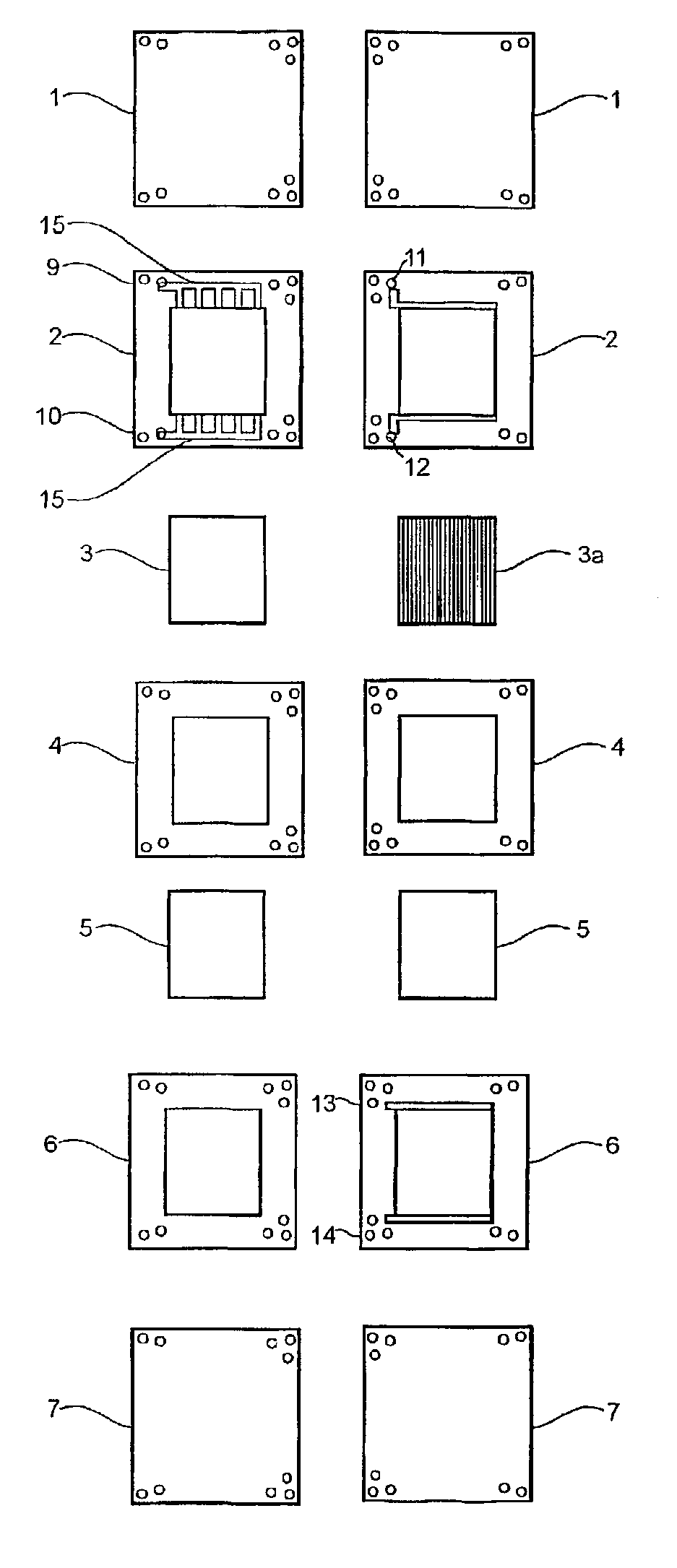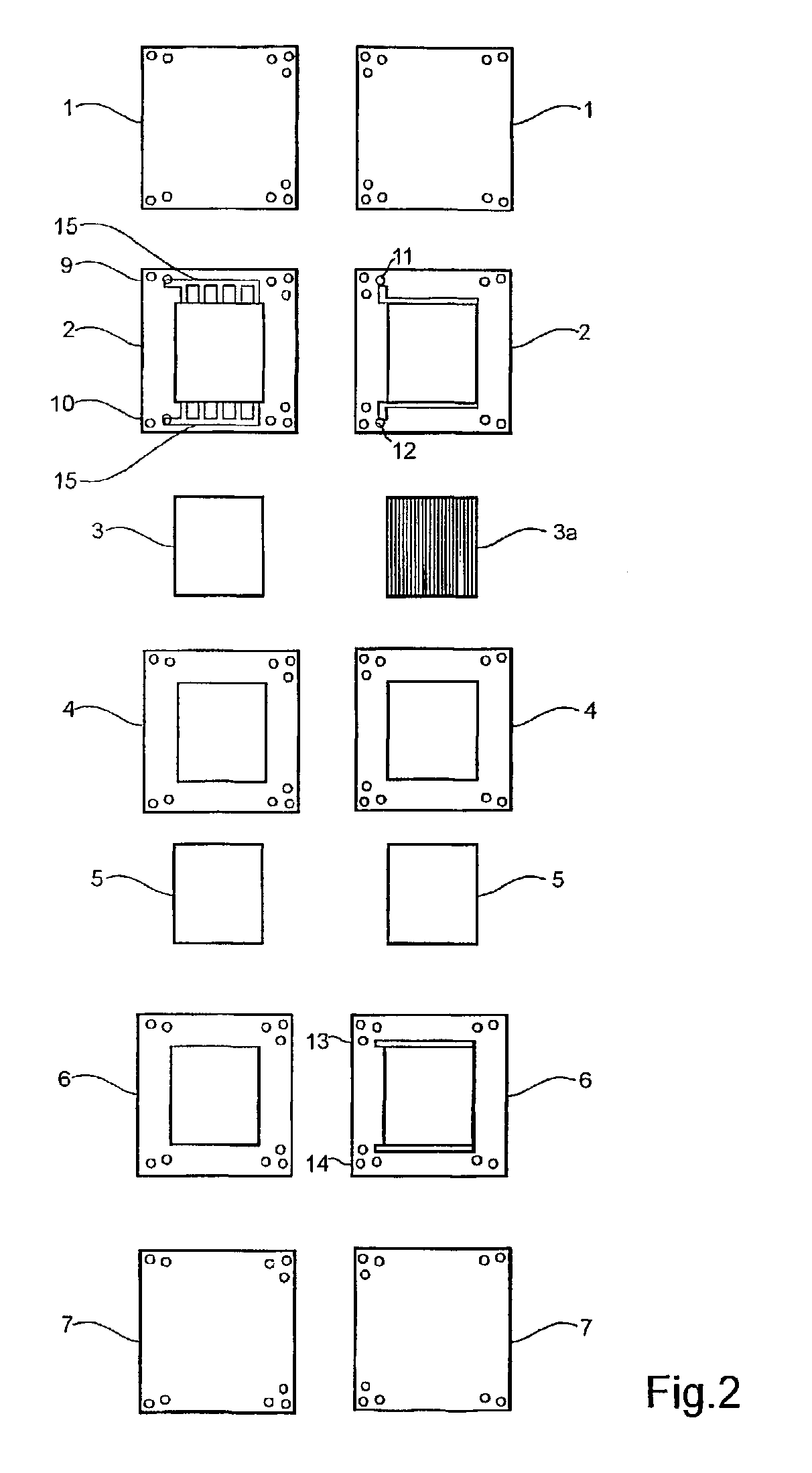Polymer fuel cell structure
a fuel cell and polymer technology, applied in the field of fuel cells, can solve the problems of water management, membrane dry out, serious problems, etc., and achieve the effect of improving the conductivity of the membrane, improving the cell operation, and improving the cell performan
- Summary
- Abstract
- Description
- Claims
- Application Information
AI Technical Summary
Benefits of technology
Problems solved by technology
Method used
Image
Examples
Embodiment Construction
[0025]A preferred embodiment of the fuel cell structure according to the present invention is shown in FIGS. 1 and 2. The fuel cell includes a conductive anode plate 1. An anode sealing frame 2 is provided adjacent the bipolar plate 1. This frame is provided with a central, rectangular opening extending in a direction corresponding to the thickness of the sealing frame (e.g., through the thickness of the frame) and into which an anode gas distribution layer 3 fits such that the anode gas distribution layer 3 is surrounded or bordered along its edge surfaces by the sealing frame 2. The frame 2 is also provided with an anode gas inlet 9 and an outlet 10 and gas distribution channels are formed as well as water inlets and outlets 11, 12 respectively. The anode gas distribution layer 3 is provided with a plurality of narrow water channels 3a on the opposite side of the layer 3, with reference to the anode plate 1. A proton exchange membrane 4 is arranged for cooperation with the plate 1...
PUM
| Property | Measurement | Unit |
|---|---|---|
| width | aaaaa | aaaaa |
| depth | aaaaa | aaaaa |
| distance | aaaaa | aaaaa |
Abstract
Description
Claims
Application Information
 Login to View More
Login to View More - R&D
- Intellectual Property
- Life Sciences
- Materials
- Tech Scout
- Unparalleled Data Quality
- Higher Quality Content
- 60% Fewer Hallucinations
Browse by: Latest US Patents, China's latest patents, Technical Efficacy Thesaurus, Application Domain, Technology Topic, Popular Technical Reports.
© 2025 PatSnap. All rights reserved.Legal|Privacy policy|Modern Slavery Act Transparency Statement|Sitemap|About US| Contact US: help@patsnap.com



